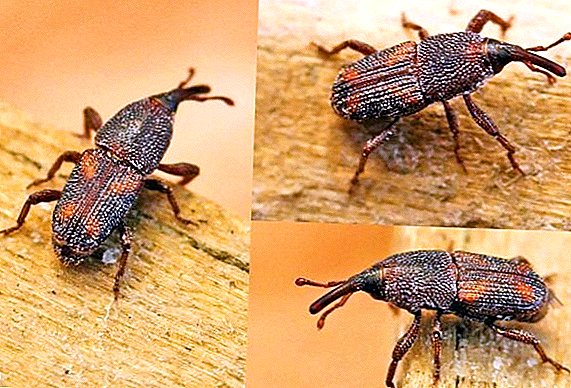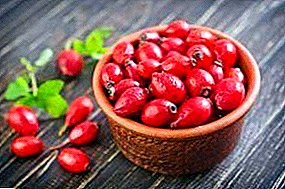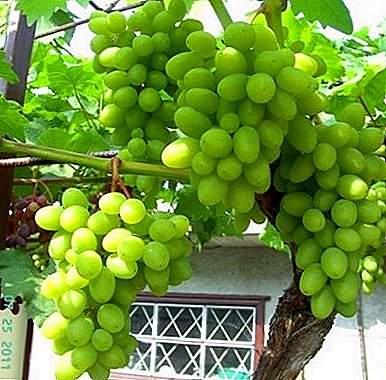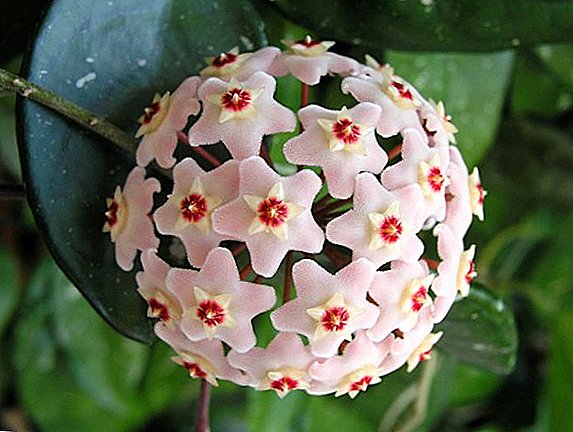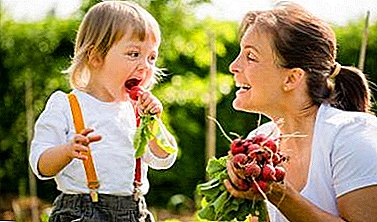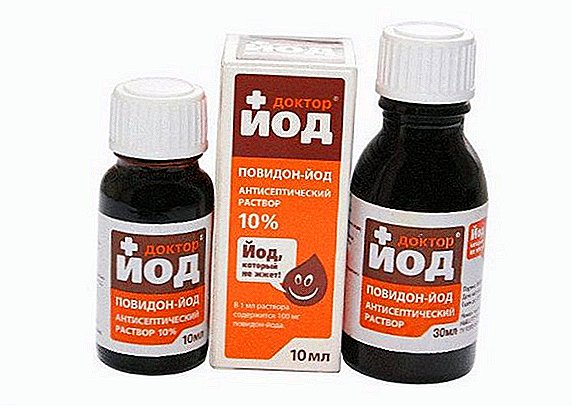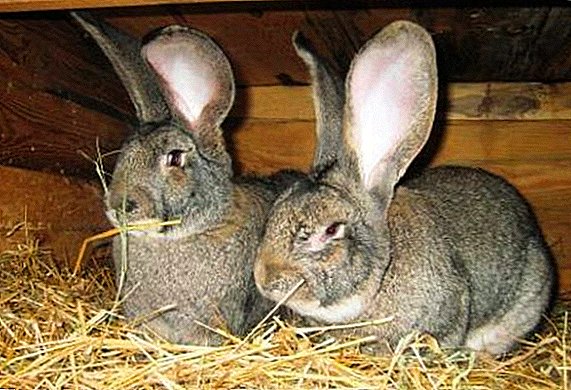 The well-known old joke about “not only valuable fur, but also two or three kilograms of meat” has not lost its relevance. The rabbit is really bred for both the acquisition of skins, and for obtaining gentle dietary meat. Rabbit fur is not as in demand as meat, so in this article we will focus on fattening meat.
The well-known old joke about “not only valuable fur, but also two or three kilograms of meat” has not lost its relevance. The rabbit is really bred for both the acquisition of skins, and for obtaining gentle dietary meat. Rabbit fur is not as in demand as meat, so in this article we will focus on fattening meat.
The advantages of breeding rabbits for meat
Breeding fluffy animals is gaining momentum.
This is not strange, because there are many advantages in rabbit breeding:
- in a short time, rabbits can gain weight well;
- their food is varied and affordable;
- they are unpretentious in content;
- they breed very actively;
- You can sell not only meat, but also skin.
Check out the best representatives of rabbit meat breeds.
What breed is better to breed for meat
Not all breeds grow equally fast and gain weight. Next, we give a list of the breeds of rabbits that are popular among farmers, we indicate the average weight of an adult and the percentage of pure meat at slaughter:
- Californian - 5 kg, 60%;

- New Zealand - 4.5 kg 70%;
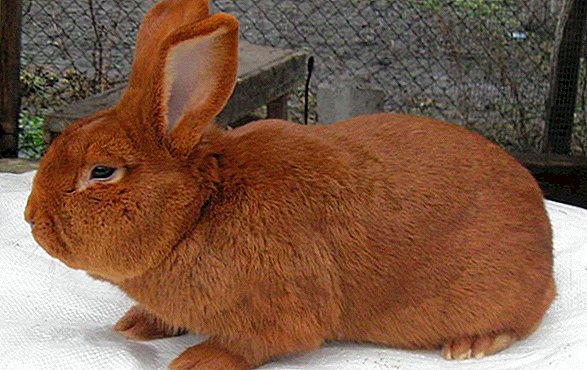
- Burgundy - 4.5 kg, 60%;
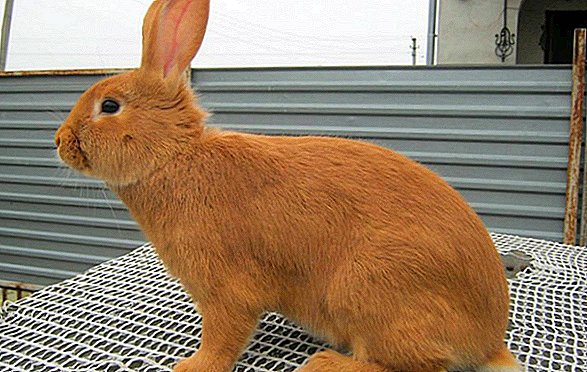
- Silver - 5 kg, 60%;
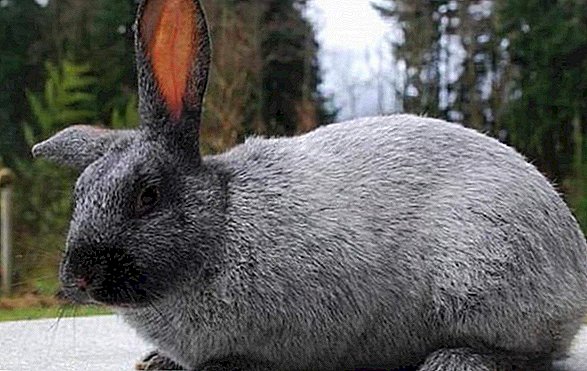
- Gray Giant - 7 kg, 80%;

- Soviet chinchilla - 5 kg, about 60% (can reach 63%);
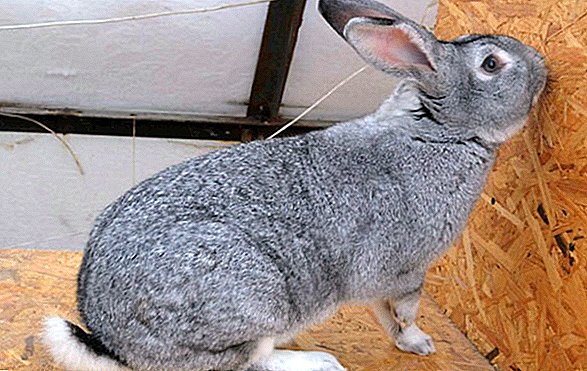
- White Giant - 5.5 kg, 83%;

- Flandre - 5-8 kg, 80%.

How to breed rabbits for meat
Only proper care, a competent diet and appropriate conditions of detention will help to get the maximum lethal output.
Did you know? The most numerous rabbit offspring was 24 cubs.
Selection and arrangement of cells
It is best to keep eared in special cells. They can be either single or double decker. The room with rabbits should be dry, well ventilated, but without drafts. If the cells are located on the street, you should take care in advance how to protect them from frost in winter.
The size of the “living space” is calculated so that each individual has from 0.5 to 0.7 m² of space. The front wall can be reticular, and the rest - "deaf", made of wood.
The optimum temperature for the life of rabbits is from 10 ° C to 20 ° C. With prolonged maintenance of high temperature (about 35 ° C), overheating of the body is possible and fatal. Especially often this happens if at high temperatures there is no air circulation, which can blow the animals and cool their bodies.  In addition to temperature, humidity in the room with animals plays an important role in breeding. Optimum humidity - 60-70%. If the air is too dry, there is a possibility of irritation of the respiratory tract, and too wet there is a risk of a runny nose.
In addition to temperature, humidity in the room with animals plays an important role in breeding. Optimum humidity - 60-70%. If the air is too dry, there is a possibility of irritation of the respiratory tract, and too wet there is a risk of a runny nose.
Read more about how to choose a cage for rabbits and how to make it yourself.
Feeding trough and drinking bowl should be firmly fixed in the cage so that when moving the rabbits do not turn them over. It is also desirable to limit the ability to climb into the feeder paws.
Care rules
Ushastiki unpretentious content, but there are simple rules, subject to which, their health and comfort will be at a good level:
- It is important that animals always have fresh water in abundance. This will help avoid the occurrence of infectious diseases. Calculation - half a liter per adult. The presence of liquid in the diet allows the food to be better absorbed. In winter, water is better heated to room temperature;
- in order to avoid inflammation on the paws, it is necessary to regularly (as it becomes polluted) to change the litter in the cells;
- disinfection in the cells should be carried out at least twice a month. Formalin solution (2%) or special solutions can be used.

Vaccinations
Vaccinations help maintain good health in the herd of rabbits. The main diseases that are being vaccinated are myxomatosis and viral hemorrhagic rabbit disease (vgbk). In the case of infection with these ailments, rabbits become massively extinct (mortality is about 100%), since the infection is transmitted by airborne droplets.
The first vaccine for vgbk should be carried out when the eared reach 45 days of age (at least 6 weeks). If the vaccine is transferred successfully, then the next one is done in three months. All subsequent - every six months.
Vaccination for myxomatosis is performed in spring for the first time. For the procedure selected rabbits reached 4 weeks of age. If there are no negative effects, then re-vaccinated after 4 weeks. All subsequent - every six months.
Important! Only a completely healthy animal is vaccinated.There is a comprehensive vaccine for both viruses. The first injection is made at the age of 6 weeks. The second - in 2 months. Subsequent - in six months.
Video: Rabbit Vaccination
Better feed for fast growth
The diet of rabbits is quite diverse and varies slightly depending on the time of year.
Summer
The main components of summer food are seasonal herbs, vegetables and fruits:
- grass (best dried, not freshly harvested) - plantain, dandelion, burdock, sorrel, nettle, etc .;
- leaves of fruit trees and bushes;
- raw or boiled root vegetables (always cleaned and washed);
- fresh fruits and vegetables;
- dry food (legumes, cereals).
We advise you to read about whether it is possible to give beets, beetroot, pumpkin, peas, wormwood, dill, zucchini, bread, bran, fish oil, regular and powdered milk to rabbits, and also find out which branches can be given to rabbits.
In winter
In winter, when there is no fresh grass and fruit, the diet of fluffies changes so as not to deprive them of vitamins and minerals:
- hay, straw;
- dry food (the amount must be increased);
- branches of coniferous trees (to replenish vitamin C).

Chalk and salt should be given throughout the year to obtain all minerals. The transition from a winter diet to a summer one should be gradual. Adding daily 50 grams of greens, reach a kilogram per individual for 20 days. When switching to a winter diet, the amount of grass should be slowly reduced.
Important! You can not give wet grass, the digestive tract can not cope with digestion and the animal will die.
Fattening rabbits for meat at home
Fattening krolley is a way to quickly make a profit with a well-fed carcass with minimal investment. The period of active feeding can last from 21 to 45 days, but most often 30 days are enough. With the right diet, during this period you can increase the weight of the animal per kilogram.
The best breeds for fattening are California, New Zealand, Gray Giant, Burgundy, White Giant. Animals of these breeds gain weight more easily. Feeding involves sticking to certain rules of nutrition, you can not give everything in large quantities. This approach will give weight gain in the most part due to muscle, not fat.
The first stage (preparatory)
The first stage lasts 7-10 days and it is aimed at preparing the gastrointestinal tract of an animal for abundant food. At this time, sharply increased calorie by increasing portions. The amount of feed is increased by half.  In winter, hay and twigs are minimized, as the grass makes the meat harder. But it is necessary to respect the balance of vitamins and minerals in feed, for proper growth.
In winter, hay and twigs are minimized, as the grass makes the meat harder. But it is necessary to respect the balance of vitamins and minerals in feed, for proper growth.
The second stage (main)
The second stage lasts from a week to 10 days and contributes to the accumulation of eared fat. In the diet should be introduced more fatty foods (cereals, porridge cooked with whole milk), add to the feed flax or hemp seeds.
The third stage (final)
The third stage is to maintain an increased appetite in rabbits for 10 days. The absorption of food in large quantities contributes to the rapid set of the required weight. To enhance the appetite use herbs that improve digestion (dill, cumin, parsley), as well as salt water.
We recommend reading about how to slaughter a rabbit, as well as find out how the rabbit skins are dressed at home.
The main focus is on feed, in which they add aromatic herbs, the amount of hay or grass is reduced as much as possible. Transitions between stages should be smooth.
How many grow and at what age rabbits are slaughtered for meat
At what age to score a crawl each owner decides for himself, starting from the breed he breeds. So, early breeds (Californian, New Zealand, and their hybrids) can be slaughtered in two months. It is economically unprofitable to grow them further - they grow poorly, and they eat abundantly.  The remaining breeds are usually slaughtered upon reaching four months. You can raise animals and up to six months, but their meat will lose in taste compared to 4-month-old individuals.
The remaining breeds are usually slaughtered upon reaching four months. You can raise animals and up to six months, but their meat will lose in taste compared to 4-month-old individuals.
Did you know? Because of active, uncontrolled breeding, rabbits became a real disaster in Australia in the 19th century. They ate all the greens meant for the sheep..Breeding rabbits is quite a profitable business. If the fluffs are vaccinated in a timely manner, kept clean and properly fed, then the result in the form of good skin and dietary meat will not take long.












